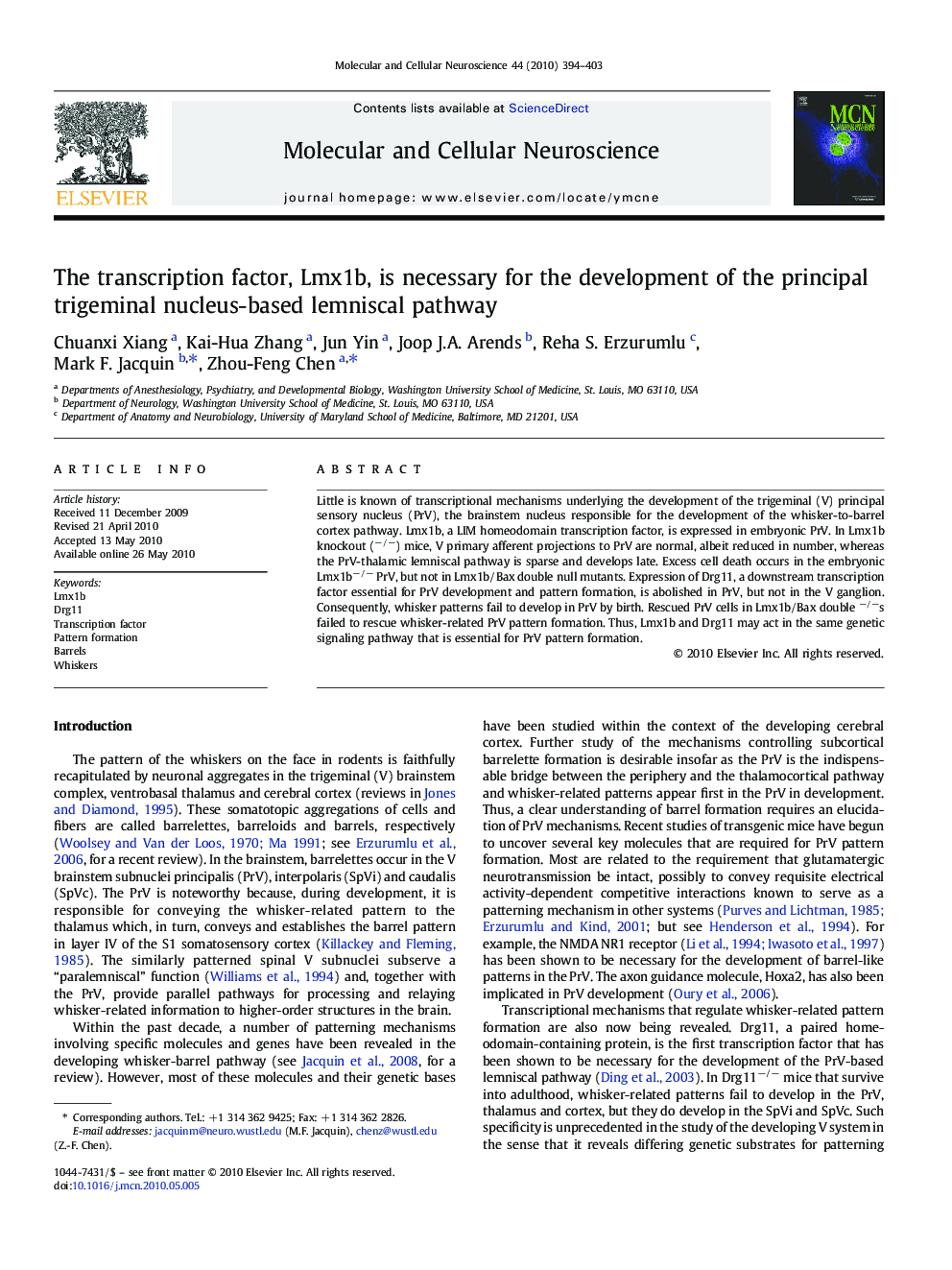| Article ID | Journal | Published Year | Pages | File Type |
|---|---|---|---|---|
| 2198779 | Molecular and Cellular Neuroscience | 2010 | 10 Pages |
Little is known of transcriptional mechanisms underlying the development of the trigeminal (V) principal sensory nucleus (PrV), the brainstem nucleus responsible for the development of the whisker-to-barrel cortex pathway. Lmx1b, a LIM homeodomain transcription factor, is expressed in embryonic PrV. In Lmx1b knockout (−/−) mice, V primary afferent projections to PrV are normal, albeit reduced in number, whereas the PrV-thalamic lemniscal pathway is sparse and develops late. Excess cell death occurs in the embryonic Lmx1b−/− PrV, but not in Lmx1b/Bax double null mutants. Expression of Drg11, a downstream transcription factor essential for PrV development and pattern formation, is abolished in PrV, but not in the V ganglion. Consequently, whisker patterns fail to develop in PrV by birth. Rescued PrV cells in Lmx1b/Bax double −/−s failed to rescue whisker-related PrV pattern formation. Thus, Lmx1b and Drg11 may act in the same genetic signaling pathway that is essential for PrV pattern formation.
